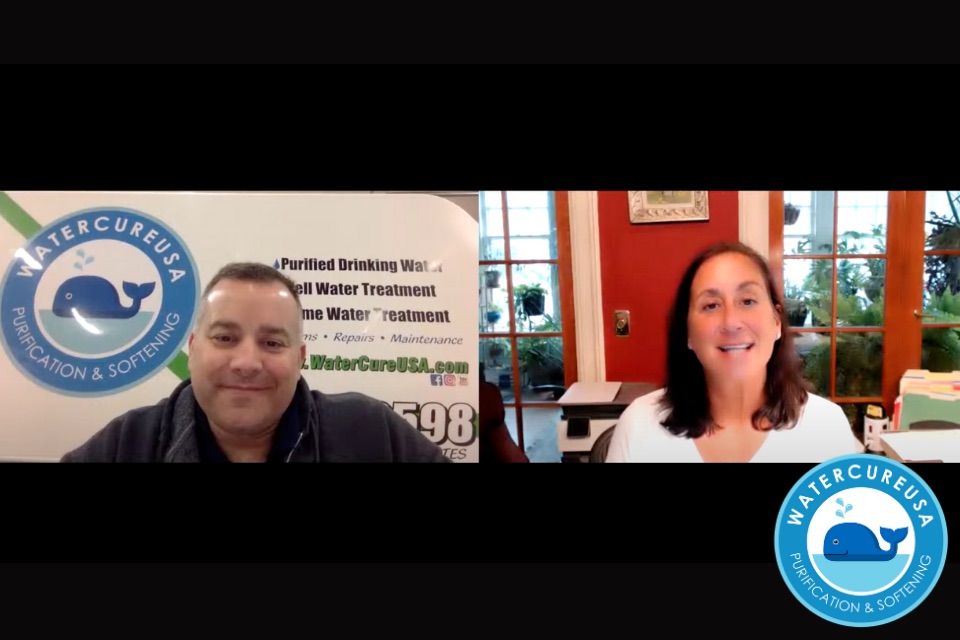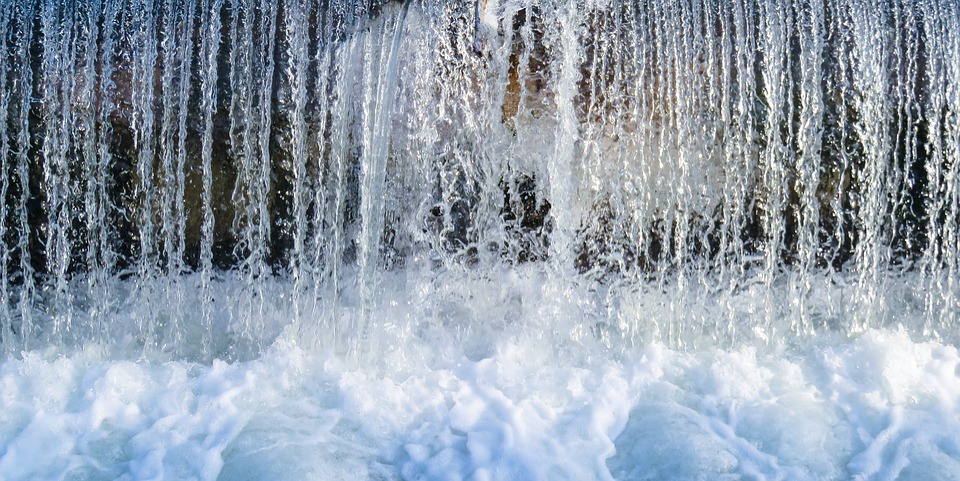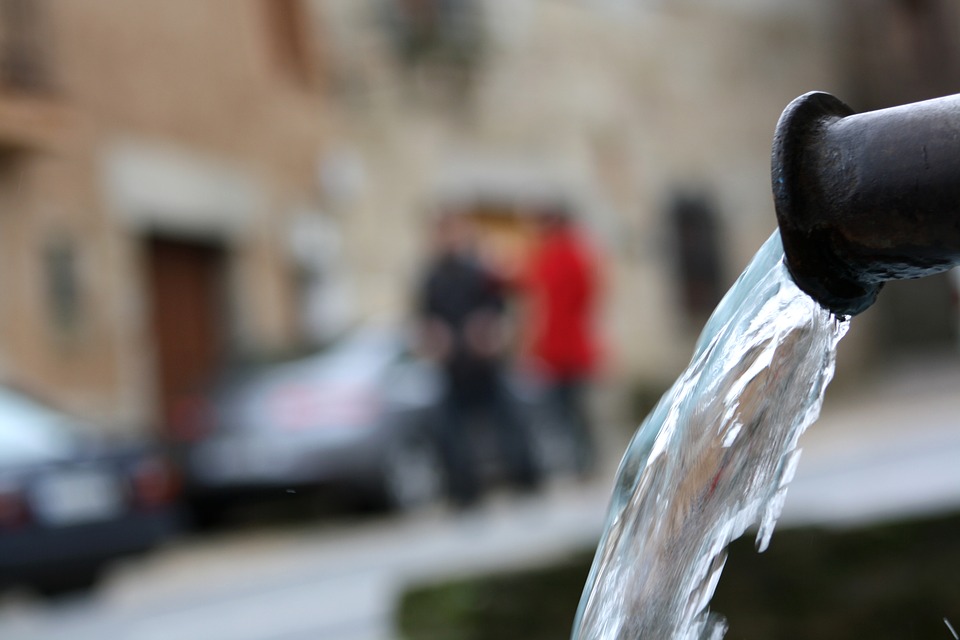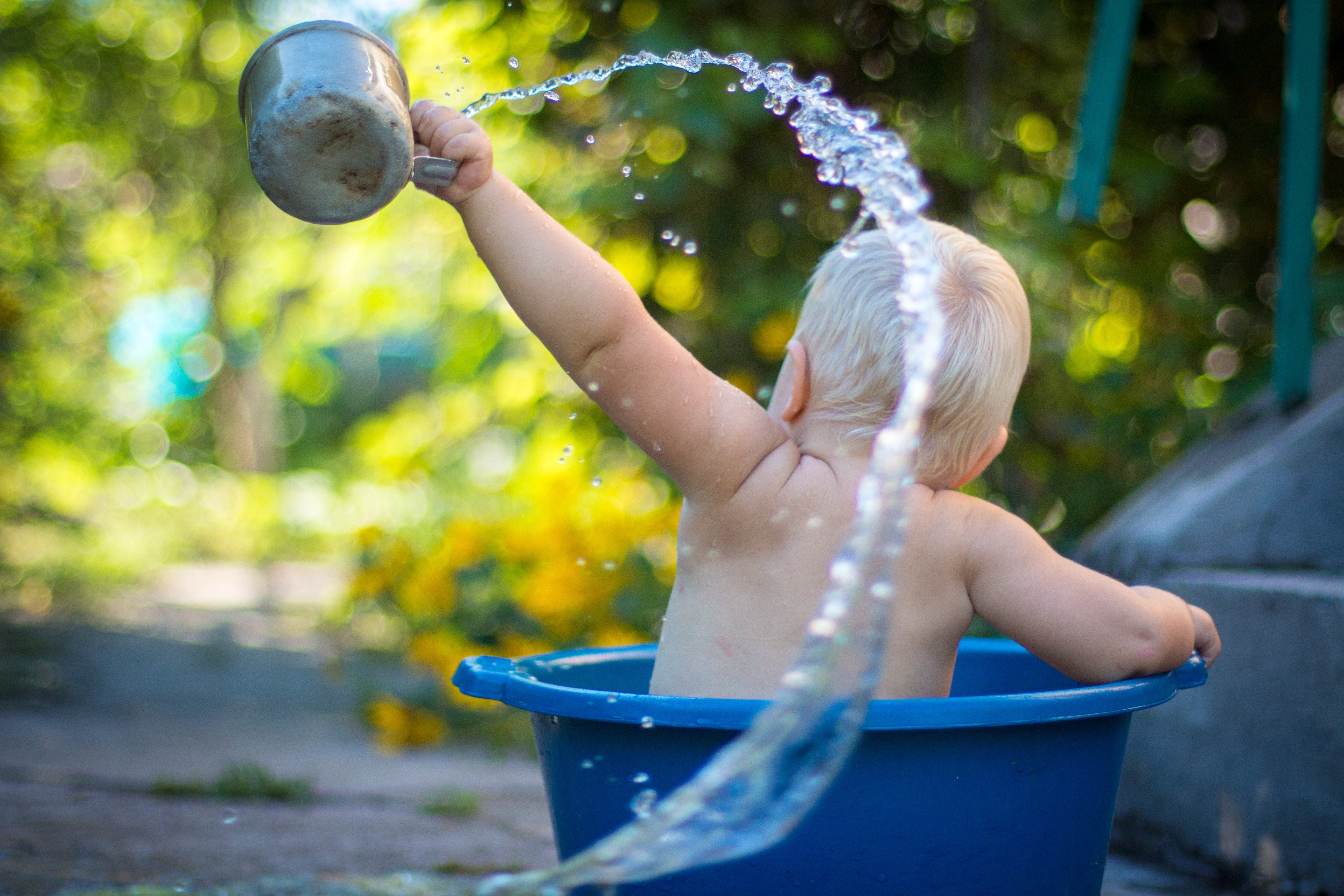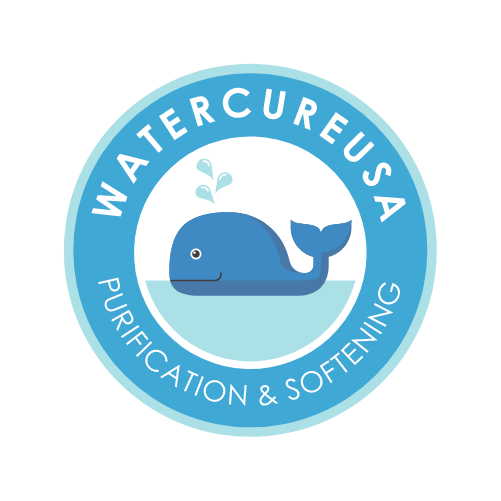Drew Orton, CEO of Watercure USA recently had the opportunity to be interviewed by Therese Furton-Barnes on The Green Living Gurus, LLC Youtube channel. You can watch the video of the interview here and below you can read the conversation they shared regarding water filtration and reverse osmosis.
Tee: Welcome to The Green Living Gurus, I am Therese Furton-Barnes, your head guru, also known as “Tee.” Today on the show we are talking about reverse osmosis and what it is because there’s so many questions surrounding it. I get questions asked to me all the time. Why reverse osmosis? Today, we are going to talk about it and get all our questions answered. I wanted to bring somebody that knows all about the subject matter and his name is Drew Orton. Drew is with Watercure USA and his family has owned Watercure USA since 1986. Drew, is that right?
Drew: Yeah, that’s when my Dad started it.
Tee: Before founding Watercure, Drew’s father, Lance, who I had the pleasure of speaking with a few months ago, was a merchant marine. He is an expert in and on the water and Lance served as a naval captain on many notable merchant ships. He became a respected speaker and mentor on topics such as water chemistry, contamination, and purification. Lance’s son, Drew, also has water in his genes. He began helping out his father’s company at age 14, and after serving in the United States Navy, Drew joined Watercure USA full-time helping his family grow the business and flourish. Currently Drew serves as CEO and previously worked as a firefighter and paramedic for a local Western New York municipality. Pure and clean water is more than just a job to him; it’s a way of life for Drew and his family, including his wife, Ann, and their four children. The Orton family purifies water for all of their needs from drinking water to irrigation for their organic garden, when they have time to garden. Whether Drew is working with one of his renown customers such as The American Cancer Society or a local family that wants to make sure their well water is safe, Drew relates on both a professional and personal level. Watercure has grown over the last 30 years operating all types of water purification systems, and all the while, Lance and Drew have kept the company ship on course to focus on community and family. Watercure USA donates frequently to church and community fundraisers to ensure the people who need clean water the most have access to it. So, you know your water tastes funny, looks contaminated, or has an unappealing color but you do not know what type of water filtration system you need. Today we’re going to talk about reverse osmosis which I’m a big, big supporter of and there’s a lot of confusion regarding it and I get asked about it all the time. When you treat your water with a reverse osmosis filter, and Drew you’ll be picking up here any minute, everything is removed from the water except the water. With reverse osmosis, you get water in its purest form. Welcome Drew!
Drew: Thank you so much, I really appreciate you having us on and I appreciate all the people you help, it means a lot.
Tee: Yeah, you know, one by one, city by city, we’re going to get people to realize our drinking water is contaminated, period. We’re here to tell people there’s choices and there’s alternatives besides just drinking bottled water which sometimes is not so healthy either but let’s start with: what is reverse osmosis?
Drew: Reverse osmosis, I’ll kind of backtrack a little bit and explain. There’s three different types of filtration or purification that you can do. One is mechanical filtration, the next would be ionic filtration and finally absorption. Mechanical is what reverse osmosis falls under. Mechanical meaning, for example, a screen in a window will keep bugs out and that’s what mechanical filtration is. Reverse osmosis allows the water to pass through a semipermeable membrane and as it’s being hit with pressure as it’s being pushed through, any impurities are left behind on one side of the membrane. Meanwhile the pure H20 is being pushed through the very, very tiny pores down to .001 microns. One molecule at a time it’s pushing through the semipermeable membrane. The pure water is on the other side which goes into a holding tank and you’d drink it from the holding tank. That’s the easy answer! There is a lot of other science that we can get into with reverse osmosis but in simple terms, it’s mechanical filtration to .001 microns. That’s really, really tiny! That’s like taking a piece of hair and slicing it in seven slices, taking one of those seven slices and slicing it into seven slices, and taking one of those slices and slicing it into seven slices. Bacteria, virus, and any chemicals left behind are removed from the water. Reverse osmosis in itself is just one part of a reverse osmosis system. In an industrial application, it’s just reverse osmosis by itself. However, in an application where we’re using it for residential needs and life source water, for drinking or cooking, that is a reverse osmosis system. It’s usually a semipermeable membrane with other types of mechanical filtration or absorption.
Tee: What about somebody who has a filtered water system they bought at Home Depot and installed it under their sink?
Drew: Some of those will be a mechanical filtration also so let’s say it’s carbon. The most common would be a carbon filtration system, for example, a fridge filter. A fridge filter is going to be absorption and mechanical filtration because the carbon itself is going to be rated. It’ll say how many microns it’s rated for, what it will filter down to whether it is 5 microns or 2 microns or 3 microns, that’s the mechanical portion. The carbon itself depends on the grades of carbon. We have catalytic carbon, we have coconut shell carbon, we have activated carbon, and lots of other types of carbon too. Each one of those are better for certain types of things depending on what you’re trying to get out. Absorption can be compared to when somebody has an overdose, they would have them drink a charcoal solution to be able to get that stuff out of their stomach, right? The charcoal is going to absorb whatever’s going on in there. They use a powdered charcoal mixture, which is really kind of gross if you’ve ever had to drink it or you’ve ever seen somebody drink it. It doesn’t look pretty, it looks just like what it sounds like. It’s charcoal ground up that you’re drinking and that’s how a carbon filter works also. The rating of what they will actually take out is based on how much carbon there is and the volume of water actually going through it. You can kind of read all those things on the filters, you know? I hope that answered the question.
Tee: No, it absolutely does. People wonder all the time what I should get, what do you think about this, etc? I know reverse osmosis is what I’m getting which is why you’re coming here on Monday. I have a different system that I’m replacing because I don’t have a reverse osmosis. I’ve done my homework and my research with you as well. It’s semi-new to me too but for many years I wanted reverse osmosis because I did my research and it gets out a lot more chemicals than the other systems which takes me to my next question: what are the chemicals that reverse osmosis does take out?
Drew: When people ask me about the chemicals I usually try to go through the top few that people usually ask about when they’re starting to research. Number one, chlorine, usually they want the chlorine out of the water. Chlorine is a carcinogen, it’s a cancer-causing agent. If you’re on municipal water, not well water, the health department has to chlorinate the water to make sure that it’s clear and bacteria free. They do that through chlorination. It’s the least expensive way they’re able to do it in mass for people. Chlorination itself isn’t necessarily a bad thing but we definitely want to filter it out to make sure we aren’t ingesting it.
Tee: So what other chemicals does reverse osmosis remove from the water? We got chlorine!
Drew: Chlorine would be number one; that’s the most common. The second thing people usually ask about is lead because it’s just top of mind, you know? It’s going to filter that out too. Maybe you’ve seen the movie with Erin Brockovich called “Chromium-6?” If you are in Western New York, which is where we are, your municipal water is being drawn from one of the Great Lakes such as Lake Erie. There is chromium-6 in that water. It’s a fact, you can go online and read it in the water reports, the EPA says it. Reverse osmosis takes that out. Some carbon filters, like a regular fridge filter, won’t take that out. You would need to step up to a reverse osmosis to remove it. Some of the other things that people are concerned about, a big topic, is pharmaceuticals especially right now. We actually have a lot of environmental groups who are very concerned about pharmaceuticals. They are finding that the sex of some of the fish in the Great Lakes are changing. The way it was described to me was that because of the pharmaceuticals going into the water, some of the game fish that are normally chasing are kind of drugged down because of various drugs in the water. They aren’t as aggressive as they used to be either. We have fish that appear to be sedated and fish whose sex are changing because of all the hormone drungs in the Great Lakes. People often think it’s because of people flushing medications down the toilet like they used to tell us to do which is probably some of it.
Tee: I don’t think we even talked about lead yet; does it remove lead from the water as well?
Drew: Yes, it removes lead from the water too. However, to finish up with pharmaceuticals: pharmaceuticals have a half-life so not all of the drug is absorbed into your body. If you get something that’s 10 milligrams, not all 10 milligrams is absorbed. What isn’t absorbed goes out in our waste and down the toilet. Now people think, “well doesn’t it go through the wastewater treatment plant and they take that stuff out?” No. The wastewater treatment plants job is to kill bacteria and viruses. They use hyper chlorination and a lot of other things that are supposed to clean that stuff up and they send it to wherever it’s going. Around here, it goes back into Lake Erie. All along the Great Lakes including the Canadian and the US side of Lake Erie, we have an antiquated wastewater system. During big rainstorms when people have flooding, the wastewater systems get overwhelmed. The wastewater systems will go to the sewage plant but they can’t process it all at once, it’s too much. By law, they are legally allowed to open the gates and let the raw sewage go into the Great Lakes.
Tee: Where does that enter?
Drew: Wherever the wastewater treatment plants are all along the Great Lakes, not just in Western New York but Fredonia, Detroit, and Ohio, all the cities surrounding the Great Lakes. In a one year span, if all the raw wastewater that gets put into Lake Erie went over Niagara Falls, raw sewage would run over it for 16 hours straight. That’s documented and you can look that up; there’s been a lot of environmental studies on that. It’s not necessarily the wastewater treatment plants fault, it’s just that as a society, we haven’t upgraded our waste water treatment plants to handle those variances. To eliminate it, they’d have to do reverse osmosis for all of the wastewater that comes through our treatment plant, for drinking and utilities, for every single house. They can’t do that for the water you’re using to flush your toilet, wash your car, water your plants, for utility water needs. We have to look at water treatment as the final barrier. We use it for our drinking and our cooking and we want to make sure that our lifesource water is as pure as possible. I hope that answers the biggest concern that people have. The other common concern would be fluoride and it’s kind of a hot topic.
Tee: Fluoride is a hot topic!
Drew: It’s a very touchy topic and I understand that. Nobody wants snaggle teeth and nobody wants their kids not to have good teeth you know. You have some dentists who are for it and some dentists who are against it. The only way to truly remove fluoride from your water is with reverse osmosis. There are some companies that do sell fluorides filters but they usually have an aluminum based product. I am not a proponent of the aluminum based product because aluminum, hopefully many of you know by now, is a contributing factor to Alzheimer’s Disease. If I thought they worked and were healthy then it would be a great option, people would love it especially in a whole house. Reverse osmosis is still, as far as I’m concerned, the best way to get fluoride out. There is some good data behind that and I encourage people to do their own research and come to their own conclusions of what they want. I personally want fluoride out of my water for me and my family. I believe that if we want fluoride, we’re going to get enough in our toothpaste. The warning on the toothpaste box says not to use more than a pea size amount of toothpaste, in fact, that’s too much. Most people use a full toothbrush, right? Fluoride is a neurotoxin, that is a fact that you can look up. Boiling your water or steaming your water actually concentrates it and makes it worse. If you go to the Fluoride Action Network website, they have medical cited works on this topic. It isn’t somebody’s opinion, visit the website, do your own research, and formulate your own opinion on whether you want it in your water or not. For my family and I, I want it out. It’s worse for children than it is for adults but the long-term studies for adults are out there. You can always take it out and if you want fluoride, you can get fluoride treatments at the dentist, use a flouride toothpaste, or a fluoride rinse. Here’s my goofy example: If you’re going to wax the outside of your car but you have a leather interior, you’re not going to use that same wax on the inside of your car. I don’t want to ingest my flouride. It might be good for my teeth but I don’t know if it’s necessarily good for the rest of my body.
Tee: And you have to consider what is that fluoride mixing inside your body with multiple chemicals that you are putting into your system? That’s a whole other factor as well.
Drew: Yes, absolutely.
Tee: We could have toxic, mixed “cocktails” every day from potentially the mix of our water, food, and beverages that we’re consuming. Glyphosate is a hot topic right now along with PFAS or the “forever chemical.” Reverse osmosis removes glyphosate, right? That is huge! Glyphosate, for anybody that doesn’t know, is a pesticide herbicide. I think it classifies as herbicide technically and was in the product “Roundup” from Monsanto which is in the middle of thousands of lawsuits from people that have developed cancer from glyphosate. It is still on the market because they have zillions of dollars to fight all these lawsuits and the ability to put their people in places where the laws are not going to change right now. Hopefully, they eventually are and it looks like there has been some movement. On that note, reverse osmosis does get out glyphosate.
Drew: Absolutely and PFAS also too.
Tee: PFAS too?
Drew: Yes, correct. People always think that I harp on reverse osmosis and that I’m against other types of filtration. Sometimes filtration in conjunction with reverse osmosis is really good. Maybe you do reverse osmosis first and then add in something else such as increasing the pH. I always tell people, first let’s start with ultra pure water. We start with ultra pure water and it takes everything out and then we’ll go from there to increase pH or add back whatever minerals you want.
Tee: These forever chemicals are typically found in teflon pans, anything that resists grease such as the bottom of a pizza container. They actually just changed a law regarding this for 2022 I believe. These are very scary chemicals and they are called “forever chemicals” because once they get in your system, they typically are there forever. They also are neurotoxins and are causing havoc. I’ve interviewed quite a few people regarding these chemicals in different parts of the United States.
Drew: They’re everywhere, there are different areas that are hot spots specifically near military bases, manufacturing facilities, things like that. There are hot spots but they’re pretty much everywhere.
Tee: You want to avoid them as much as possible and you’re probably going to start seeing a lot about it. Where I live, in Western New York, they just started testing for PFAS. Hopefully they are changing some of those laws as well because too many of these chemicals are in the water. We want to drink at its purest form and get that stuff out. Drew, what about trace minerals. I know that some water has trace minerals. Does reverse osmosis take out the good stuff or does it leave the good stuff? How does that work?
Drew: When we say it takes everything out, it takes everything out and that’s a concern people have. People will say, “My doctor or my friend says I shouldn’t drink reverse osmosis water because it’s going to take all the trace minerals out.” My response to that would be, “Ask that person or that doctor what trace minerals you’re going to be missing and see if they know.” The answer is usually calcium. They come back and say, “I’m not going to get my calcium.” My next question is usually, “Have you ever heard of a doctor telling a woman with osteoporosis to go home and start drinking as much water as possible to get her calcium?” No. What they usually say is you need to start drinking or eating your dairy, if you’re into dairy, or you need to start eating dark, leafy vegetables.
Tee: Organic!
Drew: Organic, absolutely. It’s not that trace minerals are not important, but the minerals that are in our water are not as bioavailable as the minerals that come through our food sources. Nature, through photosynthesis, is able to take those minerals out of the ground and make them into plants that are bioavailable to us. If we were going to take that mineral as a rock and put it into our body, our body won’t absorb it because it can’t do it, it’s not as bio-available. The way you’re going to get those minerals, the way you get the bulk of your minerals, is not from water but from the food that you eat. Now, can we add minerals back in? Yes, I do that too. With reverse osmosis, we have filters that will add minerals back in, such as calcium. We can do that and it’s not a problem, but yes, reverse osmosis takes the minerals out. To get ultra pure water you have to take everything out but it’s not selective. You can’t just take one thing out, you have got to get it all out. Where you live in the country determines what trace minerals you would be getting in your tap water because water is different everywhere. We typically get our iron from red meat, beef, leafy vegetables, and other foods. That’s where you’re going to get your iron from, not from tap water. Hope that answers that question!
Tee: Yeah, that was perfect. So similar to that, let’s talk about alkaline water and acidic water and how that relates to reverse osmosis.
Drew: Reverse osmosis water by itself is going to reduce the pH a little bit but it depends what your water’s starting pH is. Here in WNY, our tap water is usually about 7.2 or 73 pH. Seven being neutral; anything seven and above is good. 6.9 and lower would be considered acidic, right? With well water, I’ll sometimes see acidic water and we can boost it up. As far as alkaline water goes, reverse osmosis can be alkaline depending on what the what you’re starting with is like. As I mentioned, you sometimes have the option to boost the minerals which would result in the water being a little more acidic. You’re taking the minerals out of the water but calcium often acts as a buffer and will increase the pH overall so when you put the minerals back in, you’re increasing the pH or potential of hydrogen. The same thing happens when you use an ionizer too. You can increase the pH also that way. Now remember something, you can have really alkaline water that is toxic that has terrible levels of nitrates, arsenic, PFAS, and chromium-6. Just because it’s alkaline water or high pH water doesn’t mean that it’s pure. What I’ll usually tell people is this: let’s start with reverse osmosis water. If you want to make it a higher pH, say 8.9, we can use an ionizer or some other method to do so. That way, you’re getting high pH water but at the purest level, right? That’s what I like to do with people when it comes to pH or alkaline water.
Tee: Alright, that’s all great information. Now I’m sitting here thinking all right, so I have three kids in college, (I don’t personally) but a person listening perhaps does..
Drew: I have two in college!
Tee: So you send them away to college and somebody might say, what about a Brita filter? I mean, you want to do something, right? You don’t want them to drink tap water, do the best you possibly can.
Drew: Right, so my personal opinion is that the Brita filters are great for apartment dwellers because it just removes the chlorine, it’s not going to remove much else. It’s a “CTO filter” which removes chlorine taste, and odor. It’s also going to taste great because they use coconut shell carbon. Some people like that because it sweetens up the water a little bit but it’s not going to remove everything. One of the better “travel filters” for people who are renters that can’t put in a reverse osmosis that I like are Royal Berkey water filters.
Tee: I have been getting a lot of questions about Berkey!
Drew: Yeah. I own two Royal Berkeys, reason being that my family liked to camp, especially when the kids were young. We don’t go much anymore, the girls are older and they want to go to condos now so we don’t often do camping. We would take a Berkey filter with us because they are travelable. It won’t remove everything like reverse osmosis, it’s going to be one step below when it comes to removing things such as pharmaceuticals and fluoride. They do sell a fluoride filter for it but it has that aluminium base in it that’s why I don’t like it. However, that’s my opinion! You can do your own research but they’re great for traveling, you know? It’ll take out bacteria and viruses, things like that. It’s a ceramic filter so it’s a lot of mechanical filtration and absorption also. I got one for my son who is stationed in Rio, Brazil. He has one there because he couldn’t get a reverse osmosis where he’s staying. You do the best that you can, you know? You can’t always do everything and it’s very hard to get a portable reverse osmosis. Brita is a great CTO Filter, it’s just going to remove the chlorine though and not anything else.
Tee: What is CTO?
Drew: Chlorine, taste, and odor. Sorry! It will remove some of those things and the water is going to taste really good. If you have to drink that or bottled water, I’d probably go with a Brita because I don’t love the plastic surrounding bottled water.
Tee: Right, so that’s great information! One of the things that I thought was interesting, and I talked to your Dad about this, is that you can also install a reverse osmosis on a shower head?
Drew: We have shower filters for people who are renters; that’s another great option for renters also. It’s a carbon based filter so it’ll remove the chlorine when you’re showering. Chlorine is a big factor with people that have skin conditions, such psoriasis or dry scalp conditions. It’s great to get the hardness out of the water but if you can get the chlorine out of the water, that’s great. Remember, our skin is our largest organ. Through absorption, our body will absorb things which is why many people have medication patches, you know what I’m saying? Medication patches, pain patches, birth control patches; people can actually get sick form absorption. You know when you get out of the pool and you smell like chlorine for a little? That’s because there is chlorine in the water. If you can remove that, it can help a lot of people that have skin conditions and hair conditions, scalp conditions, alopecia, and so forth. I can’t medically say that for certain but I have a lot of people who get a system and find that it makes a big, big difference.
Tee: So, we learned today about reverse osmosis and what it removes and perhaps some other alternatives. There’s not many disadvantages of reverse osmosis. I know some people say it uses more water, yes it might, but really the advantages are so much more beneficial.
Drew: I think so. I mean, one of the disadvantages people will talk about will be the waste water. What do I mean about waste water? When water is pushing against the semipermeable membrane and the pure water is going out on the other side, some water is left on that side so it does take three or four gallons of water to make one gallon of reverse osmosis water. That’s why we just use it for life source water, our drinking, our cooking and so forth. However, that leftover water is not going off into space, it’s environmentally friendly and that water is going back into the environment. No matter what you do with any type of filtration, if you’re truly purifying and filtering the water, there is some form of waste, right? Because you could also be throwing away cartridge filters that are being used. Fridge filters, depending on what type of fridge you have, are supposed to be changed 2-3 times a year depending one what kind you have. With us, the filters are changed once a year and it’s filtering so much more water. You’re using it for your cooking, your pets, people use it for watering their plants, all that kind of stuff! So the waste water. I don’t really look at it as an issue, because no matter what type of filtration you’re doing, there is some type of waste going on. Some filtration is not environmentally friendly if the filters go into a landfill. If we can do reverse osmosis where the water is going back into the environment, that is not an issue. There are some people who actually take and reclaim that unused water and use a reclamation system and do other things with it.
Tee: Just don’t use it for your organic garden!
Drew: No! That’s where all the chemicals are.
Drew: Some people would use that water for flushing the toilet. In a perfect world, we would have two different pipe lines coming into our homes: pipes that go just to our toilets and things like that, utility stuff, so we could use waste water from reverse osmosis to flush our toilets for example. Right? That kind of stuff can be done, it just depends on how much people want to spend on investing into it.
Tee: So obviously we don’t live in a perfect world but we want to live in a world that we can eliminate as many chemicals as possible from our system, our water, our food, and all the products we are using. The more that you can get out of your system and lessen your toxic overload, the less chance you have of getting sick and living a longer life. That’s what I am here for; to try and help people try to figure out ways to remove chemicals from their body and their homes. So, at Watercure USA, they provide these services. If you are interested, I will have their phone number. When you call, use my name and say where you saw it. Who should they ask for Drew?
Drew: I’m generally not in the office, I’m usually out doing stuff. They can call the office and talk to Lizzie or Ann if they want a water test. We can come out and test their water for them. If they don’t live in the area and they are interested in water testing, we can help them too. We can mail a sample bottle and send it to a lab for them if they’d like. The cost of the test is dependent on the level of testing being done. Locally, we can do it pretty much free for everybody but if they’re mailing it in from somewhere else, it would have a charge.
Tee: Right. Just so everybody knows, I am actually getting a system from Watercure USA so I am working with them and referring people to them because I have done my due diligence with this company and I feel very strongly that they provide not only great service but a great product. They are in the middle of doing a few different people’s homes that I referred them to. One is in Philadelphia, there’s’ a few here in Buffalo, Ohio, Pittsburgh maybe, and more. Wherever you are, don’t hesitate to call. If they can help you, they will tell you or maybe refer you somewhere else.
Drew: Yes, I might know a high quality water person in their area. I have a network of people that I know all over the country who are really good water treatment professionals and I can possibly refer you to them if we can’t help you ourselves but sometimes we can!
Tee: This is such good information Drew, I so appreciate you coming on with me and talking about this.
Drew: Thank you, absolutely!
Tee: People say what should I do to get chemicals out of my life and my home? There’s two areas besides food: water is number one and my second one is laundry. Whatever you’re washing your clothes and sheets in that you’re wearing and breathing in every day, that’s number two. So let’s get those cleaned out: two steps and you’ll be eliminating a lot of chemicals from your body just from those two.
Drew: Absolutely, yeah, thank you so much Tee!
Tee: Wonderful, great to meet you. Looking forward to seeing you in person one of these days. We’ll be doing a lot more together.
Drew: Thank you so much!
Below is the original video interview between Drew Orton and Therese Furton-Barnes on Youtube:
